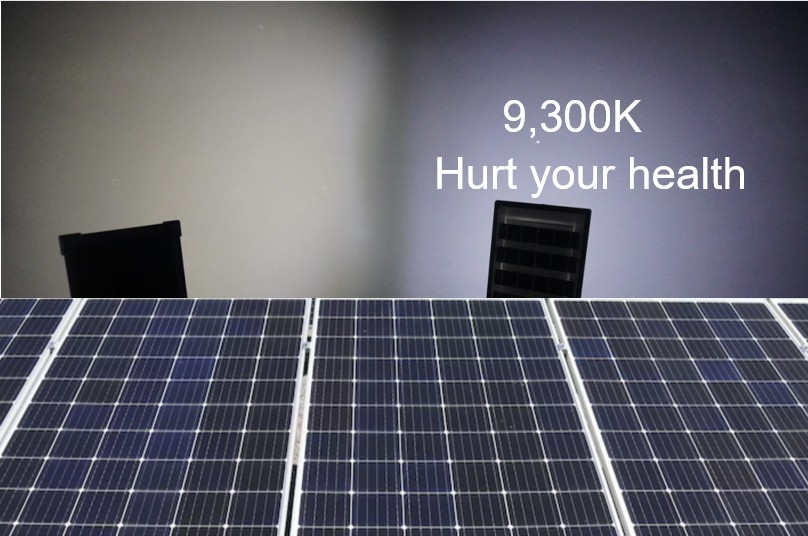Nowadays, solar lights are very popular, but many people get bad quality types, these bad solar lights have fake parameters, and damaging the customers' eyes.
1st problem of the bad solar light: fake paramters
Open the Amazon US website, type in “LED Solar Light,” and you’ll find some falsely advertised products, such as(I have highlighted some words by red mark):
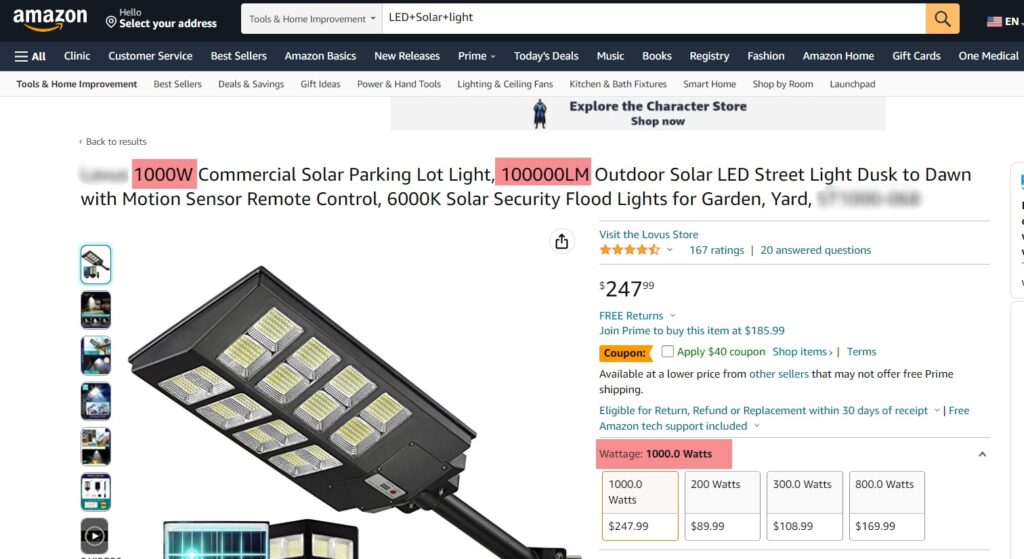
Why is it false advertising?
- A 1000W solar light is almost impossible with current technology. If it existed, Tesla electric cars wouldn’t need charging; just install some solar panels on the body. Our air conditioners wouldn’t need electricity either; just connect a few solar light batteries.
- The product description states it’s suitable for gardens. But does your garden need a 1000W light? Are you sure such high power won’t cause a fire?
- 100,000 lumens is also impossible. Even with a perfect 200LM/W efficiency, a 100,000-lumen LED light would require 500W, which is still impossible. If it were real, wouldn’t such intense light harm people’s eyes?
I’ve been a third-party quality inspector in the lighting industry for near ten years, with an independent photoelectric testing lab in Shenzhen, so I have full confidence in my views.
However, ordinary consumers can’t master as much specialized lighting knowledge as a third-party quality inspector like me, let alone have the testing equipment. So, we find that many American & Canada consumers have given these lights 5-star reviews, and it’s evident they’re happy with their purchases.

2nd problem of the bad solar light: misleading voice
Open YouTube, type in “LED Solar Light,” and you’ll find many vloggers reviewing and promoting LED solar lights (usually inserting sales links in their video descriptions). They genuinely describe the lights’ features, like sensing functions, charging capabilities, and the fact that no wiring is needed. These features are indeed attractive.
But due to their lack of professional lighting knowledge (no offense to these vloggers, as I’ve learned a lot from them), they can’t point out significant drawbacks, like high color temperature, overstated power, insufficient waterproofing, or inadequate battery capacity.
Note: I’ve measured similar bad solar lights’ color temperatures with a spectrometer, and the highest reached over 9000K, while 4000K, 5000K, or at most 6500K is eye-friendly. So, they sincerely recommend harmful, falsely advertised LED solar lights to American & Canada consumers.

Therefore, based on the above points, we can conclude that many Americans have purchased inferior, eye-damaging solar LED lights and are happy due to their lack of photoelectric knowledge. Unfortunately, this is a bit ironic, but it’s happening.
So, how can we change this situation?
- Manufacturer self-discipline: LED solar light manufacturers should strictly follow industry standards and improve product quality. They should also enhance after-sales services, providing detailed product usage guides to ensure consumers can use the products correctly and safely.
- Platform responsibility: B2C platforms should strictly screen sellers to ensure product quality. Platforms should also regularly spot-check sellers to identify and rectify quality issues promptly.
- Raise consumer awareness: When buying LED solar lights, consumers should pay attention to light source parameters such as color temperature and luminous flux.
- Local US & Canada lighting brands are suggested to emphasize the key differences between their LED solar lights and inferior products when promoting them: healthier spectrum and more eye- and animal-friendly.
Knowledge extension: By watching below video, you will know different color tempeture of bad solar light and good solar light, you will also know why do these bad solar lights manufacturer make it high color temperature.
If you want to get high-quality lights including indoor and outdoor lights, and solar lights from the real manufacturers, you are suggested to implement a supply management process. We can help you in China, by providing you supply chain management service:
-Inspection: Preshipment Inspection\Outgoing Inspection
-Testing
-Audit & Introducing manufacturers
-Design
-New product development
Email:[email protected]
Wechat: LNY0539
Whatsapp: +86 18616827523
Add: Room 1806, No.3 Building, Nantaiyun Park, Guangming, Shenzhen, China.
Related posts:
 Will the brightness of the DC light strip gradually decrease as the length increases?
Will the brightness of the DC light strip gradually decrease as the length increases?
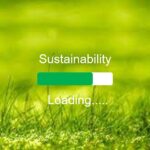 Sustainability Audit
Sustainability Audit
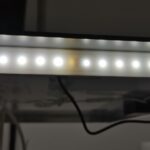 Top 6 lighting quality issues from the factories
Top 6 lighting quality issues from the factories
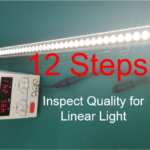 12 Steps to Inspect LED Linear Lights before Shipment
12 Steps to Inspect LED Linear Lights before Shipment
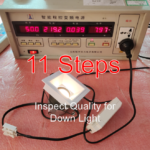 11 Steps to Inspect LED Down Lights before Shipment
11 Steps to Inspect LED Down Lights before Shipment
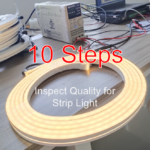 10 Steps to Inspect LED Strip Lights before Shipment
10 Steps to Inspect LED Strip Lights before Shipment

